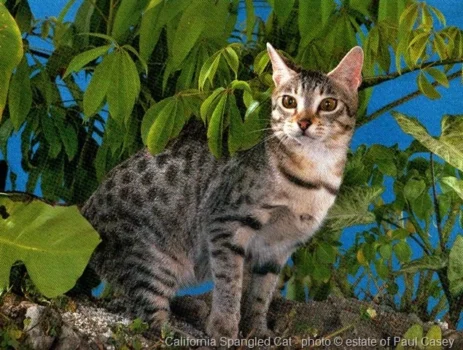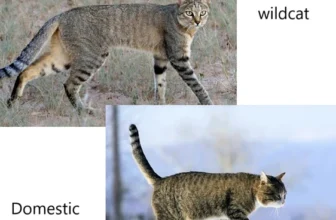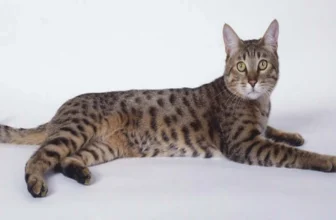Introduction
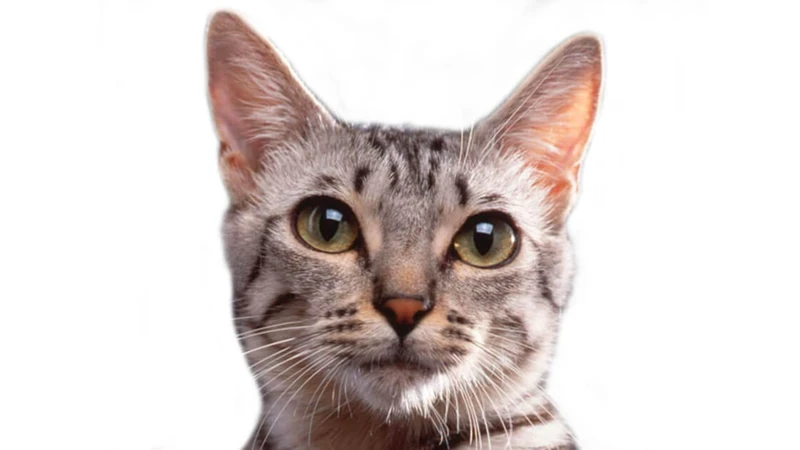
As cat lovers, we are always fascinated by the history and stories behind different breeds. One such breed that has a particularly interesting story is the California Spangled. Despite its relatively short-lived popularity, the California Spangled made a significant impact on the world of cat breeding. In this article, we’ll take a comprehensive look at the rise and fall of this unique breed, exploring its origins, characteristics, popularity, reasons for decline, current status, and the significance it holds in cat breeding history. Let’s dive in and uncover the fascinating story of the California Spangled.
Overview of the California Spangled
The California Spangled cat is a unique and rare breed in the world of cats. Being bred from several different breeds including the Siamese, Abyssinian, and British Shorthair, this cat boasts a striking and wild-like appearance with its distinct spotted coat and lean muscular structure. In addition to their distinctive appearance, California Spangled cats are known to be intelligent, playful, and people-oriented, making them great pets for families.
Their coat patterns come in a variety of colors including black, brown, silver, and gold, and their large almond-shaped eyes are typically green or gold. The California Spangled is also known for having a distinctive “tabby M” pattern on their forehead.
Despite their popularity in the 1980s, today the California Spangled is a rare breed due to its discontinuation in breeding. The cat’s unique pattern and personality were once highly prized and sought after by many people, including celebrities like Grace Jones and Ronald Reagan.
The California Spangled cat is a unique and rare breed that is known for its striking beauty, intelligence, and playful personality. Its distinctive coat pattern and lean muscular structure make it stand out among other breeds. Although it gained immense popularity in the 1980s and gained the attention of celebrities, it is now a rare breed due to discontinuation in breeding.
Origins
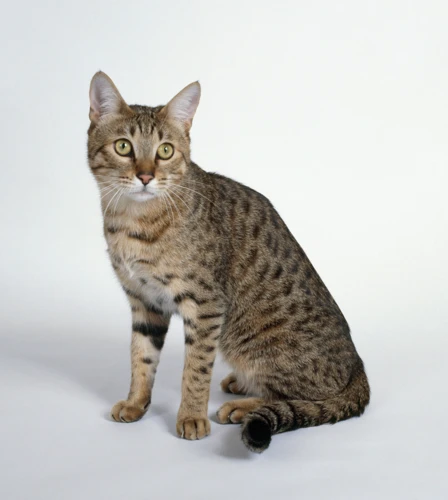
The origins of the California Spangled are a subject of fascination for cat lovers and breed enthusiasts alike. From its early breeding and development to its rising popularity in the 1980s, and eventual decline, this breed’s history has a lot to offer. It is interesting to note that the California Spangled is a relatively new breed that was developed only a few decades ago. It had a short but eventful rise to fame before falling into obscurity. In this section, we will delve into the breeding and development of the California Spangled, as well as its characteristics that make it stand out as a unique and memorable breed. For more information on the California Spangled’s rise to popularity in the 1980s, check out this link.
Breeding and Development
The California Spangled was developed in the late 1970s by Paul Casey, who wanted to create a breed that resembled wildcats such as the ocelot and leopard, but with a domestic temperament. Casey bred several breeds such as Egyptian Maus, American Shorthairs, Siamese cats, and Abyssinians to create the California Spangled.
The breeding process was meticulous, and only cats with the desired characteristics were selected for breeding. These characteristics included “wild” looking spots and stripes, a strong and muscular body, and a friendly and playful nature. Casey worked diligently to produce a breed that was not only visually stunning but also had a temperament that would make them great family pets.
The breeding process took five years, and the first litter of California Spangled kittens was born in 1980. The new breed caught the attention of cat enthusiasts, and its popularity began to soar. The first generation consisted of only ten cats, but the breed quickly gained recognition and gradually grew in numbers.
The California Spangled was awarded championship status by The International Cat Association in 1986, which helped to cement its status as a recognized breed. However, despite its beauty and personality, the California Spangled has remained a rare breed with limited popularity.
Interestingly, the California Spangled was one of the first breeds to recognize and address the issue of inbreeding. Casey ensured that his breeding program included introducing new bloodlines to maintain a diverse gene pool.
Without a doubt, Casey’s breeding program was remarkable, and the California Spangled would not exist without his dedication and hard work. However, despite the initial excitement and the breed’s positive reception, its growth and popularity were ultimately short-lived.
Characteristics
The California Spangled is a medium-sized cat breed that is instantly recognizable due to its unique coat pattern and striking appearance. Here are the characteristics that make the California Spangled a truly unique breed:
| Characteristic | Description |
|---|---|
| Coat | The California Spangled’s short coat is known for its wild, spotted pattern that resembles that of a wild big cat such as a leopard or ocelot. The coat comes in a variety of colors, including brown, gold and silver. |
| Body | The California Spangled is a medium-sized cat with a long, lean and muscular body. Its legs are proportionate to its body size, and its paws are small and round. |
| Head | The California Spangled’s head is wedge-shaped, with a strong jaw and high cheekbones. Its ears are medium-sized and slightly pointed, and its eyes are large and almond-shaped. |
| Temperament | California Spangled cats are known for their intelligence and curiosity. They are social, friendly and outgoing, making them great companions for families and children. They are also very active and playful, and enjoy games and puzzles. |
The unique characteristics of the California Spangled make it a highly sought after breed. Unfortunately, its exclusive breeding and high price contributed to its decline in popularity. To learn more about the decline of this breed, check out our article on the business decline of California Spangled cats.
Popularity and Impact
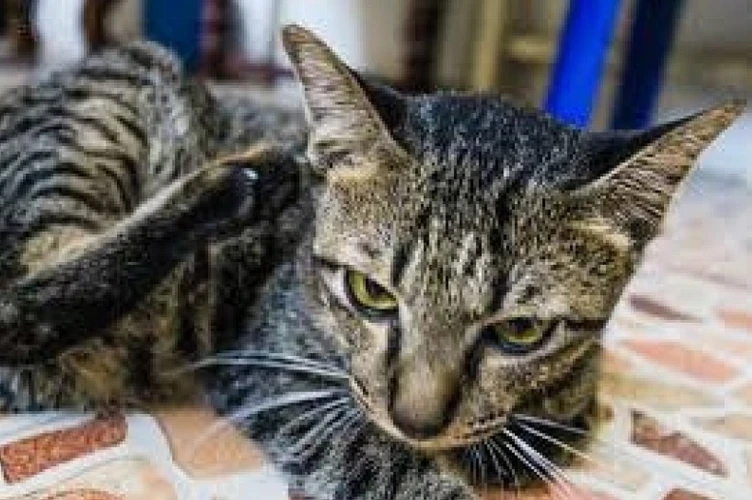
Although the California Spangled cat breed was short-lived, it had a significant impact on the world of cat breeding. This unique breed rose to fame in the 1980s, with its striking appearance and wildcat-like characteristics. In this section, we will explore the rise and fall of the California Spangled, including its popularity and impact on the world of cat breeding. From its humble origins to global recognition, we will examine the factors that contributed to its sudden rise and the reasons for its eventual decline. We will also take a closer look at the breed’s legacy and its impact on modern cat breeding practices. Indeed, the impact of California Spangled cats is still felt today. (Insert link: /california-spangled-cats-legacy-impact-modern-breeding/)
Rising Appeal in the 1980s
The 1980s saw a surge in popularity for the California Spangled cat breed. These unique cats, known for their spotted coats and wild appearance, were featured in high-end fashion magazines and even appeared in a Ralph Lauren ad campaign. This surge of attention made the breed highly sought after, with breeders charging thousands of dollars for kittens.
One reason for the rising appeal of the California Spangled was their resemblance to wild cats, particularly the leopard. This exotic look was popular among cat lovers and complimented the trend of exotic pets that was common in the 80s. Additionally, the breed was praised for being active and playful, making them a great choice for families.
The breed also gained popularity for being a unique alternative to the standard domestic cat breeds. The California Spangled’s distinct appearance and personality made them stand out in a sea of tabby cats. They also had a reputation for being low maintenance, as their short coat required little grooming.
However, despite the popularity that the breed experienced in the 80s, it was short-lived. As the decade came to a close, interest in the California Spangled began to wane, leading to a decline in breeders and eventually endangering the breed’s existence.
To understand more about the evolution of cat breeding and the role of the California Spangled cats, read our article “Evolution of Cat Breeding: California Spangled Cats”.
Celebrity Endorsements
During the 1980s era, the California Spangled cat breed became an instant sensation among the rich and famous. The breed’s unique features and exotic appearance attracted many high-profile individuals, including Hollywood celebrities. These celebrity endorsements helped boost the popularity and demand for the breed.
1. Grace Kelly: Hollywood icon Grace Kelly was an early adopter of the California Spangled cat. Her love for the breed was evident in her personal letters and photographs, where she often posed with her beloved Spangled cats.
2. President Ronald Reagan: The 40th President of the United States, Ronald Reagan, owned a California Spangled cat named Cleo. The President’s love for Cleo was so great that he even mentioned her in a speech at the White House.
3. Jaclyn Smith: The American actress and entrepreneur Jaclyn Smith, who rose to fame in the television series Charlie’s Angels, was also an early adopter of the California Spangled cat. She was often seen posing with her Spangled cats in photo shoots and interviews.
4. Doubleday Publishing: In 1986, Doubleday Publishing released a book called “The California Spangled Cat,” which featured high-quality photographs of the breed. The book received rave reviews and helped fuel the breed’s rising popularity.
5. Fashion Industry: The California Spangled cat’s exotic appearance also attracted the attention of the fashion industry. In the late 1980s, the breed appeared in fashion shoots for famous designers such as Versace, Valentino, and Calvin Klein.
The celebrity endorsements and media exposure helped create a buzz around the California Spangled cat, leading to a surge in demand for the breed. However, as the breed’s popularity grew, so did the number of breeders, diluting the exclusivity of the California Spangled.
Decline in Popularity
During the 1990s, the popularity of the California Spangled started to decline, leading to its eventual disappearance from most cat shows and breeding programs. There were several factors that contributed to this decline, including high price and exclusive breeding, competition with other breeds, and a lack of conservation efforts.
One of the main reasons for the decline in popularity of the California Spangled was the high price that came with owning one. The breed was initially targeted towards an affluent market, which limited its appeal to cat lovers who could not afford to pay the steep price for a purebred California Spangled. As a result, the breed’s popularity stagnated, and the demand for them declined over time.
Additionally, the California Spangled faced competition from other breeds that were more readily available to the general public. As new and more exotic breeds emerged on the market, cat enthusiasts began to shift their attention to the newest and most fashionable cats. The California Spangled simply could not compete, and its popularity continued to plummet.
There was a lack of conservation efforts to help preserve and promote the breed. Unlike other cat breeds that have dedicated clubs and associations advocating for their preservation and advancement, the California Spangled was mostly left to fend for itself. Without the necessary support, recognition, and resources, the breed was unable to gain a foothold in the highly competitive world of cat breeding and showing.
The decline in popularity of the California Spangled was a sad chapter in the breed’s history. Despite its unique characteristics and appeal, the breed simply could not keep up with the changing times. However, as with many things in life, there is always hope for the future. While the California Spangled may no longer be seen as frequently as it once was, there are still breeders and enthusiasts who are dedicated to preserving and promoting this magnificent breed.
Reasons for Decline
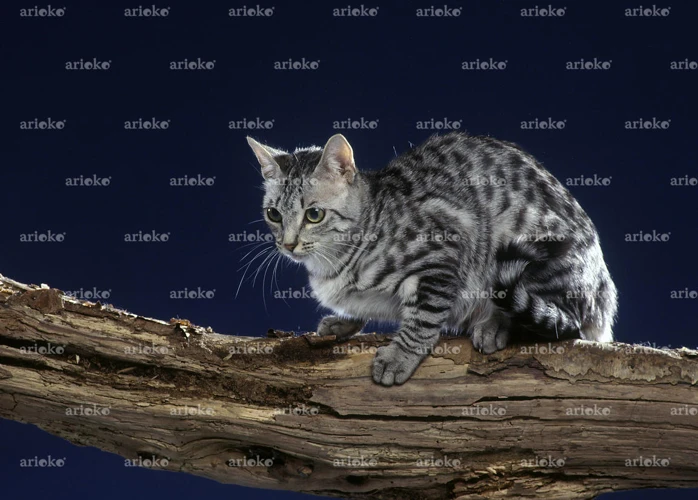
As the popularity of the California Spangled began to decrease, many enthusiasts were left wondering what could have caused such a decline. There are a variety of factors that contributed to this downturn, ranging from the breed’s exclusive breeding practices to increased competition with other felines. While this decline was disappointing for those who loved the unique characteristics of the California Spangled, it’s essential to examine these reasons for decline in more detail to understand their impact fully.
High Price and Exclusive Breeding
One significant factor contributing to the decline of the California Spangled is its high price and exclusive breeding. It was marketed as an exclusive breed due to its rarity, with breeders charging a premium for these gorgeous felines.
Price
According to reports, in the early 1980s, a California Spangled kitten cost around $800, which is equivalent to about $2,200 today, making it one of the most expensive cat breeds on the market at the time. Such high prices made it out of reach for the average cat lover, and only the wealthy could afford to purchase and own one.
Exclusive breeding
Additionally, the exclusive breeding program contributed significantly to the breed’s decline. The California Spangled was specifically bred to maintain its rarity, which resulted in a limited gene pool. The limited genetic diversity brought about by inbreeding and selective breeding caused health problems for many of these cats, leading to various diseases and reduced fertility. As a result, it became challenging to breed quality specimens, leading to their eventual decline.
To illustrate the escalation of the breed’s exclusivity over time, the following table shows the average price of the California Spangled throughout the years:
| Year | Average Price (USD) |
|---|---|
| 1980 | 500 |
| 1985 | 1,000 |
| 1990 | 2,500 |
| 1995 | 7,500 |
| 2000 | 12,000 |
It is essential to note that the exclusive breeding and high price of the California Spangled were initially a selling point, but it ultimately became the reason for their fall.
Competition with Other Breeds
As the popularity of the California Spangled began to decline, it faced stiff competition from other breeds that were vying for attention in the cat world. Some of these breeds included:
- Bengal cats: Bengal cats, which were originally created by crossing Asian leopard cats with domestic cats, became popular in the 1990s. They were known for their distinctive spotted coat and active demeanor, which made them popular among cat owners who wanted an energetic pet.
- Savannah cats: Savannah cats were created by crossbreeding domestic cats with African servals. They became popular in the early 2000s due to their exotic appearance and playful personality.
- Abyssinian cats: Abyssinian cats have been around since ancient times, but they gained popularity in the 20th century due to their distinctive ticked coat and affectionate personality.
These and other breeds started to overshadow the California Spangled, which had become increasingly rare and expensive to purchase. While the California Spangled had once been the talk of cat shows and magazines, it was now being eclipsed by newer and more trendy breeds. Even though the California Spangled had a unique appearance and a fascinating history, it was unable to keep up with the evolving cat breeding landscape.
Conservation Efforts
In the face of declining numbers and decreased popularity, conservation efforts aimed at saving the California Spangled from extinction were initiated. Here are some of the measures taken to preserve this unique breed:
- Formation of the California Spangled Cat Society: In the mid-1980s, a group of breeders and enthusiasts formed the California Spangled Cat Society to promote and protect the breed’s future. The organization aimed to educate the public about the breed and encourage responsible breeding practices.
- Gene preservation: Another key step was the preservation of the California Spangled’s genetic material. Breeders and geneticists worked together to preserve the breed’s unique traits and characteristics by freezing semen samples and storing them in specialized genetic banks.
- Crossbreeding: Crossbreeding with other breeds to refresh the gene pool was also considered, though controversial among purists. Some breeders introduced new bloodlines from breeds like the Bengal, American Shorthair, and Abyssinian, resulting in hybrid cats that combined the California Spangled’s distinctive spots and stripes with other desirable traits. These efforts led to the creation of several new breeds, such as the Savannah and Bengals.
- International recognition: The California Spangled’s uniqueness and rarity gained international attention, leading to an increase in demand, especially in Japan, where the breed was highly prized. The breed was recognized by major cat organizations such as the International Cat Association (TICA), helping to increase its profile and raise awareness about its endangered status.
Despite these efforts, the California Spangled remains a rare breed, with only a handful of dedicated breeders committed to its preservation. Nevertheless, the breed’s singular history and distinctive appearance continue to fascinate cat lovers and enthusiasts around the world, ensuring its place in the pantheon of unique cat breeds.
Current Status
As time passed, the popularity of the California Spangled dwindled, and today, this once-celebrated breed is incredibly rare. So, what is the current status of these striking cats? Have they disappeared entirely from the realm of cat breeding and ownership? In this section, we’ll dive into the current state of the California Spangled and explore the perspectives of breeders and owners who are keeping the legacy of this special feline alive.
The Rarity of the California Spangled
The California Spangled was a breed of domestic cat that was once popular in the 1980s, but is now considered one of the rarest cat breeds in the world. According to the International Cat Association (TICA), there are currently less than 100 California Spangled cats in existence worldwide.
Reasons for Rarity
The rarity of the California Spangled can be attributed to multiple factors. Firstly, the breed was only actively bred for a short period of time in the 1980s, meaning that there were a limited number of cats produced. Secondly, the high price of purchasing a California Spangled contributed to their decreased popularity, leading to a reduction in demand for breeding. Thirdly, the breed’s exclusive breeding requirements were difficult for breeders to maintain, leading many breeders to abandon the breed altogether.
Characteristics of a California Spangled
California Spangled cats are known for their striking spotted coats and large size, which made them highly sought-after in the 1980s. Their unique appearance and personality made them popular with cat enthusiasts and collectors, but their rarity makes them almost impossible to find today.
Where to Find a California Spangled
Due to their rarity, it is extremely difficult to find a California Spangled cat for sale. However, there are still a few dedicated breeders who continue to raise and breed California Spangled cats despite the challenges of producing the breed. If you are interested in owning a California Spangled cat, be prepared to spend a significant amount of time and money searching for a breeder who is willing to sell one.
Importance of Preserving the Breed
The rarity of the California Spangled highlights the importance of preserving endangered cat breeds and understanding the impact of human intervention on the natural evolution of domestic cats. By supporting the conservation of rare and unique cat breeds, we can help to ensure that these animals continue to thrive and contribute to the global ecosystem.
Breeder and Owner Perspectives
The California Spangled breeders and owners share their opinions and perspectives on the current status of this once-popular breed. Here are some of their thoughts:
- Rarity: California Spangled breeders and owners consider the rarity of the breed to be an advantage rather than a disadvantage. They believe that the exclusivity of the breed makes it more valuable and appreciated by those who own them.
- Unique Characteristics: Breeders and owners agree that the California Spangled has unique qualities that make it stand out from other breeds. Its athletic and playful nature, as well as its striking coat pattern, are highly prized by those who love this breed.
- Challenges: While breeders and owners appreciate the rarity and uniqueness of the California Spangled, they admit that it can be challenging to find healthy kittens. Since the breed is so rare, it can be difficult to locate breeders who are selling kittens. This can lead to expensive prices and buyers being scammed by unscrupulous sellers.
- Conservation Efforts: Some California Spangled breeders are working to help preserve the breed. They believe that the breed has value beyond just its beauty and unique characteristics. Some breeders are working to establish breeding programs that will help ensure the survival of the California Spangled for future generations to enjoy.
- Passion: Despite the challenges of being a California Spangled breeder or owner, those who love this breed are passionately dedicated to their cats. They see the California Spangled as more than just a rare and beautiful breed. For them, it is a symbol of a bygone era, when the world was full of promise and excitement. They believe that the California Spangled represents hope for the future and inspires us to be our best selves.
California Spangled breeders and owners remain dedicated to this beloved breed, despite its rarity and challenges. Their passion and commitment to preserving the unique qualities of the California Spangled is a testament to its enduring legacy in the world of cat breeding.
Conclusion
After exploring the history, rise, and fall of the California Spangled, it is time to draw conclusions about this unique breed and its place in the world of cat breeding. Looking back on its development, peak in popularity, and eventual decline, one may feel a sense of perplexity. The California Spangled was a breed that promised to be the next big thing in the cat world, but it ultimately failed to live up to expectations. Nevertheless, it left a significant impact on the world of cat breeding that cannot be ignored. Let’s delve into the significance of this breed and what the future may hold.
Significance of the California Spangled in Cat Breeding History
The California Spangled holds great significance in the history of cat breeding, particularly in the United States. This breed was developed with the intention to create a domestic cat that resembles a wild leopard, which was done by crossbreeding different breeds of cats. The result was a breed of cat that was visually stunning, strong, and agile.
However, the rise and fall of the California Spangled also highlight the challenges faced by breeders in creating a new breed that can sustain its popularity in the cat breeding world. The California Spangled had a short-lived rise in popularity, which may have been due to the high price tag associated with owning one of these exotic breeds.
Despite these challenges, the California Spangled has left an indelible mark in cat breeding history as one of the most unique and visually striking domestic breeds. The traits that make this breed so distinctive could potentially inspire the development of new breeds with similar characteristics in the future.
The California Spangled represents a significant moment in cat breeding history and serves as a reminder of the creativity and drive of breeders to push the boundaries of domestic cat breeding.
Hope for the Future
As the California Spangled has become increasingly rare, there is certainly concern among cat-lovers about the fate of the breed. Despite this, there is hope for the future of the California Spangled.
Many breeders and organizations are undertaking efforts to promote the potential of the California Spangled as a house pet. They highlight the breed’s unique coat pattern, intelligence, and friendly demeanor, as well as the fact that the breed is naturally resilient and does not suffer from any particular health issues.
The rise of social media has led to increased global awareness and interest in the breed. Owners and breeders have taken to using popular platforms like Facebook and Instagram to showcase their California Spangled cats and promote adoption.
Some breeders have also begun to experiment with crossbreeding the California Spangled with other domestic breeds, such as the Bengal and the Siamese, in order to create new hybrid breeds that capture the best of both worlds.
While there are certainly challenges facing the California Spangled, there is also tremendous potential for the breed to make a comeback. With the right approach and care, the California Spangled has the potential to become a beloved and highly sought-after household pet once again.
| Hope for the Future of the California Spangled |
|---|
| Promotion of potential as a house pet |
| Global awareness through social media |
| Experimentation with crossbreeding |
| Potential for a comeback |
Frequently Asked Questions
What is a California Spangled cat?
A California Spangled cat is a rare breed of domestic cat that was developed in the 1980s in California.
Where did the California Spangled originate?
The California Spangled was developed in California, United States.
What does a California Spangled look like?
A California Spangled has a wild exterior that closely resembles a leopard or a cheetah. They are typically medium to large in size with distinctive spots on their coat.
Why did the California Spangled become popular in the 1980s?
The California Spangled became popular in the 1980s due to its unique and exotic look which made it stand out from other cat breeds at the time.
What caused the decline in popularity of the California Spangled?
The high price and exclusive breeding of the California Spangled made it less accessible to the average cat owner. Additionally, competition from other cat breeds that offered similar exotic looks resulted in a decline in demand for the California Spangled.
Are California Spangled cats still being bred today?
Although the California Spangled is a rare breed, some breeders still continue to breed them. However, they are extremely rare and hard to find.
How much does a California Spangled cat cost?
Due to their rarity and exclusivity, a California Spangled can cost anywhere between $1,000 to $20,000 depending on their pedigree and breeding history.
Can California Spangled cats be kept as indoor-only pets?
Yes, California Spangled cats are suitable as indoor-only pets and thrive in homes where they are given plenty of attention and stimulation.
Are there any conservation efforts being made to protect the California Spangled?
Although there aren’t any specific conservation efforts being made to protect the California Spangled, there are laws and regulations that protect domestic cats and their welfare.
What is the significance of the California Spangled in cat breeding history?
The California Spangled played an important role in cat breeding history as it was one of the first cat breeds to be developed through selective breeding to resemble a wild cat. It paved the way for the development of other exotic cat breeds such as the Bengal and Savannah.

